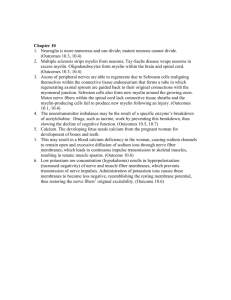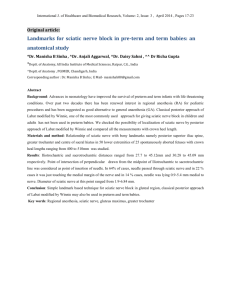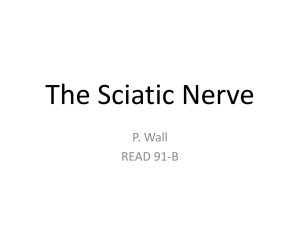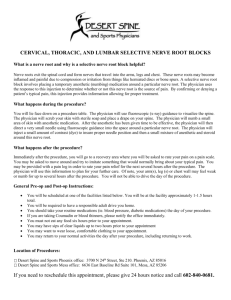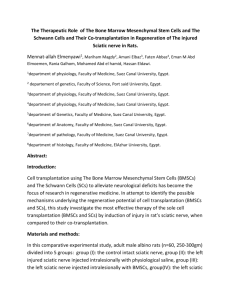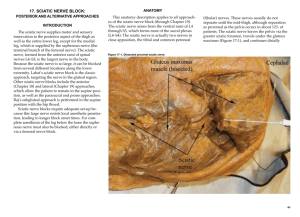Rudiuk T.Y., Khrapai O.V., Raskaley V.B., Kovalchuk O.I.
advertisement
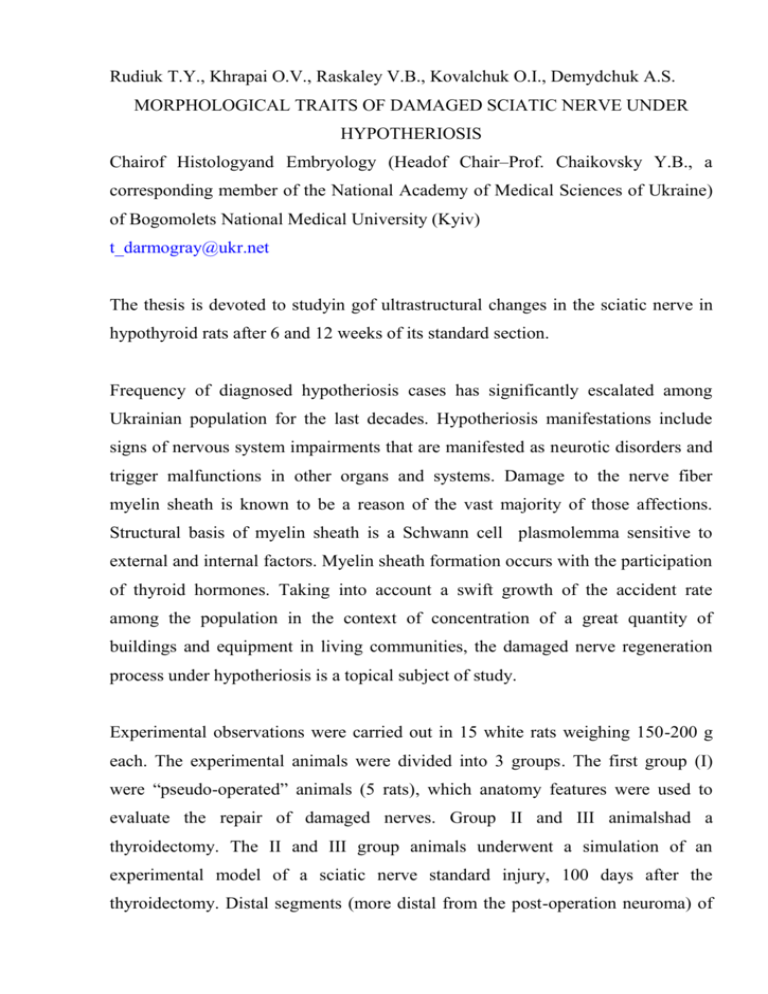
Rudiuk T.Y., Khrapai O.V., Raskaley V.B., Kovalchuk O.I., Demydchuk A.S. MORPHOLOGICAL TRAITS OF DAMAGED SCIATIC NERVE UNDER HYPOTHERIOSIS Chairof Histologyand Embryology (Headof Chair–Prof. Chaikovsky Y.B., a corresponding member of the National Academy of Medical Sciences of Ukraine) of Bogomolets National Medical University (Kyiv) t_darmogray@ukr.net The thesis is devoted to studyin gof ultrastructural changes in the sciatic nerve in hypothyroid rats after 6 and 12 weeks of its standard section. Frequency of diagnosed hypotheriosis cases has significantly escalated among Ukrainian population for the last decades. Hypotheriosis manifestations include signs of nervous system impairments that are manifested as neurotic disorders and trigger malfunctions in other organs and systems. Damage to the nerve fiber myelin sheath is known to be a reason of the vast majority of those affections. Structural basis of myelin sheath is a Schwann cell plasmolemma sensitive to external and internal factors. Myelin sheath formation occurs with the participation of thyroid hormones. Taking into account a swift growth of the accident rate among the population in the context of concentration of a great quantity of buildings and equipment in living communities, the damaged nerve regeneration process under hypotheriosis is a topical subject of study. Experimental observations were carried out in 15 white rats weighing 150-200 g each. The experimental animals were divided into 3 groups. The first group (І) were “pseudo-operated” animals (5 rats), which anatomy features were used to evaluate the repair of damaged nerves. Group ІІ and ІІІ animalshad a thyroidectomy. The II and III group animals underwent a simulation of an experimental model of a sciatic nerve standard injury, 100 days after the thyroidectomy. Distal segments (more distal from the post-operation neuroma) of the damaged sciatic nerve after 6 and 12 weeks of having simulated the peripheral nerve damage model were materials for the study. It has been establish hed that the distal segment of the sciatic nerve displays regeneration after having underwent standard damage under hypotheriosis conditions 6 weeksago. It is manifestedina new growth of non-myelinated and myelinic fibers. However, some signs of a sudden activity of degeneration processes in the form of phagocytic activity in Schwann cells with subsequent formation of a significant quantity of degeneration ovules for utilizing newly formed large-diameter aberrant myelin fibers are identified simultaneously. As the objective of a damaged nerve regeneration isrecanalization and a new growth of non-myelinated and myelinic fibers of various diameters, including large diameter fibers, the findings of our studies reveal a significant impediment in termination of degeneration and launch of regeneration because of nerve fiber myelination malfunction. The myelination malfunction persists under hypotheriosis even 12 weeks after the experimental damage of the sciatic nerve. Conclusions. The animal swith asimulated standard injury of sciatic nerve under hypotheriosis displayed signs of degeneration inits distal segment which were much more decelerated inits developmentas compared withnon-hypothyroid animals.Six weeks after the nerve damage, the nerve distal segment in hypothyroid animals showed active processes of recurrent degeneration in newlyformed, but aberrant tmyelin fibers. The large-diameter newly-formed myelin fibers in hypothyroid animals were inadequate because of myelination malfunction. Reinitiation of regeneration was observed within 12 weeks after the hypothyroid nerve section. Deceleration of degeneration processes great lyprolongs the time of regeneration.

